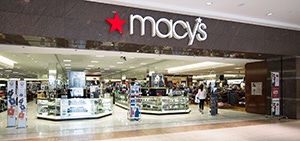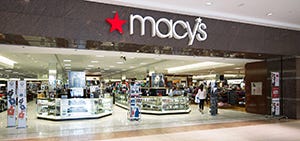Department stores are increasingly turning to omni-channel solutions as they struggle to drum up sales in an increasingly competitive retail marketplace, according to L2’s Digital IQ Index: Department Stores 2017.
April 6, 2018

Retailers such as Macy’s, Nordstrom, J.C. Penney are going digital in an effort to boost flagging sales.
 Department stores are increasingly turning to omni-channel solutions as they struggle to drum up sales in an increasingly competitive retail marketplace, according to L2’s Digital IQ Index: Department Stores 2017.
Department stores are increasingly turning to omni-channel solutions as they struggle to drum up sales in an increasingly competitive retail marketplace, according to L2’s Digital IQ Index: Department Stores 2017.
The report benchmarks the digital performance of 64 department store brands operating across 14 markets globally, examining each brand’s strengths and weaknesses across e-commerce, digital marketing, mobile and social channels.
According to the report, U.S. department stores experienced a decline of nearly $75 billion in annual sales since 1999. Meanwhile, Amazon’s growth since 2010 recently surpassed the combined 2016 annual revenue of Macy’s, Nordstrom and Sears combined. At the same time, off-price retailers such as Burlington and Ross have experienced gains and opened more than 350 locations in the 2015 and 2016 fiscal years–compared to retailers such as Macy’s and Sears, which have had to shutter multiple brick-and-mortar locations.
In an effort to combat this trend, department stores are turning to omni-channel to engage consumers and drive traffic to stores. Among the retailers included in L2’s report, the Top 10 Digital Performers across e-commerce, digital marketing, mobile and social media are (in order): Macy’s, Nordstrom, J.C. Penney, Kohl’s, Zappos, Asos, Sears, John Lewis, DSW and Otto. Other top performers include Marks & Spencer, Zalando, Bloomingdales, Neiman Marcus, House of Fraser, Net-A-Porter, Saks Fifth Avenue, Argos, Farfetch, El Corte Inglés and Selfrdiges.
Other highlights from the report include:
Consumers who engage with a retailer across multiple channels visit brick-and-mortar locations 23 percent more often, spend 4 percent more while in store and are more likely to recommend that retailer to others.
89 percent of the Index brands possess one or more omni-channel feature to drive customers to physical locations.
A combined 71 percent of brands indexed in both 2016 and 2017 offer free shipping in some form, and more than half offer free return shipping. However, no index Asian brands have adopted a ��“hassle-free” return policy.
In-store returns for online purchases are most popular among consumers, compared to buying online and picking up in-store or live in-store inventory.
24 percent of the Index brands have adopted a same-day, click-and-collect option, with mass-market brands comprising the bulk of that figure.
In the U.K., 78 percent of shoppers are expected to start using a click-and-collect method by 2020.
Only 27 percent of U.S. shoppers used a click-and-collect option in 2016; however, 51 percent of them were first-time users, indicating a surge in popularity.
The availability of same-day delivery increased, with 16 indexed brands now offering the service.
92 percent of the Index brands have some form of mobile site optimization.
On social media, organic reach on Facebook declined 52 percent in the last year, with department store brands generating 25 percent fewer interactions in Q1 2017 compared to Q1 2016.
You May Also Like






